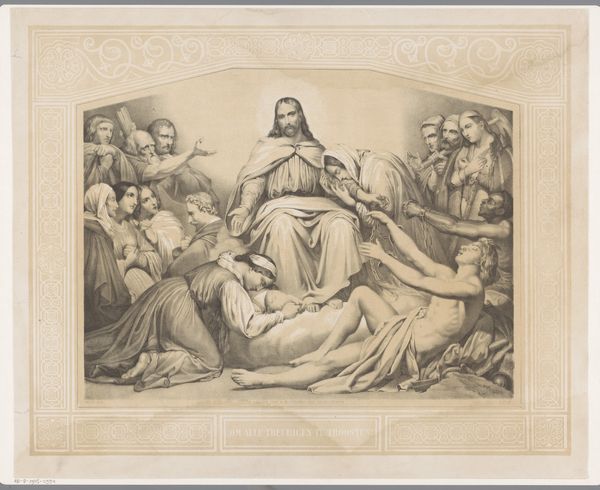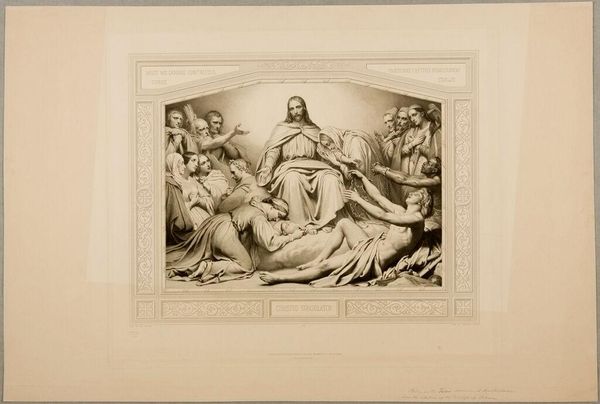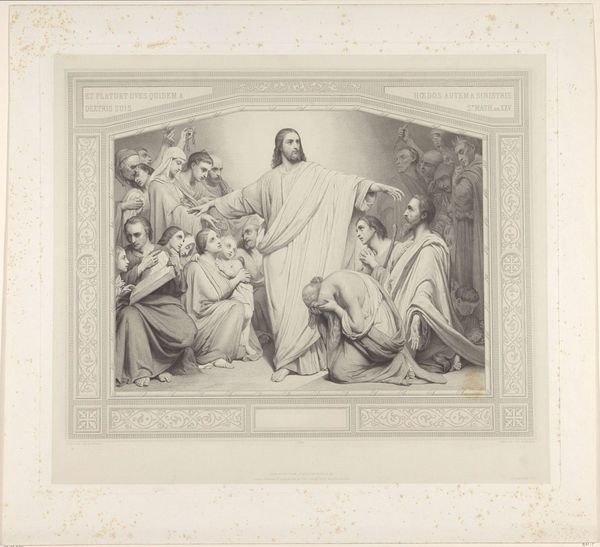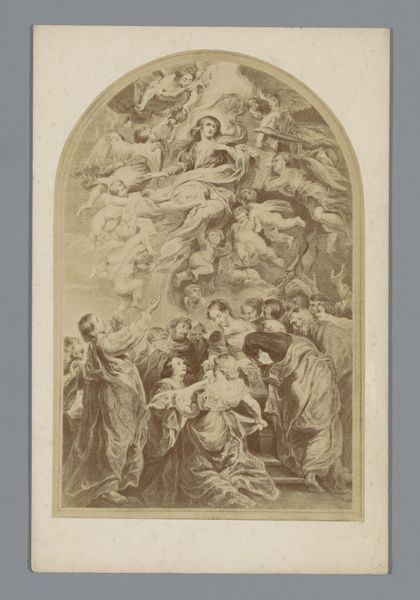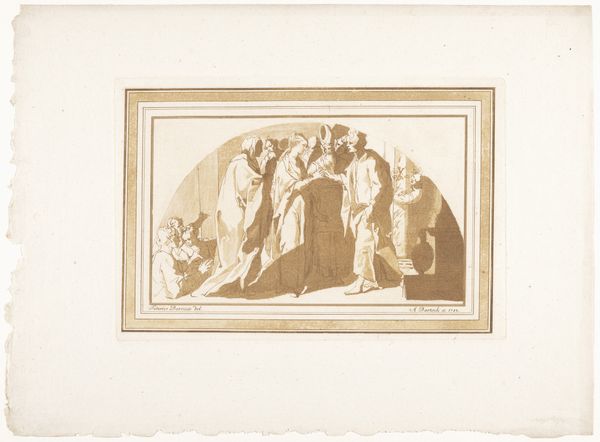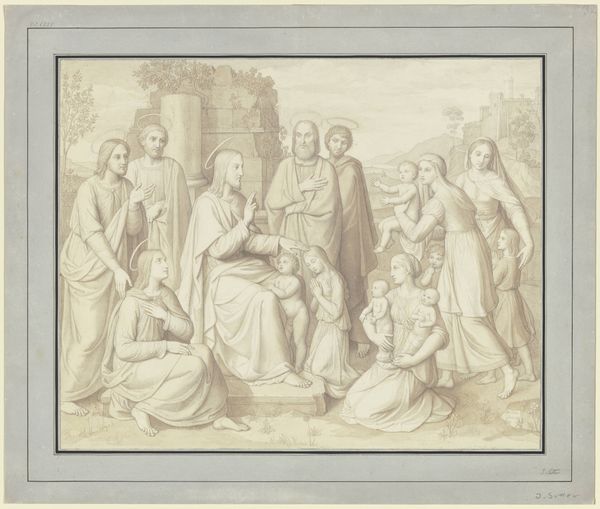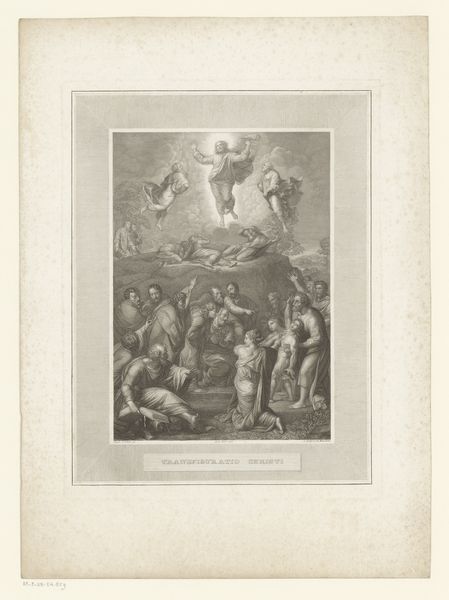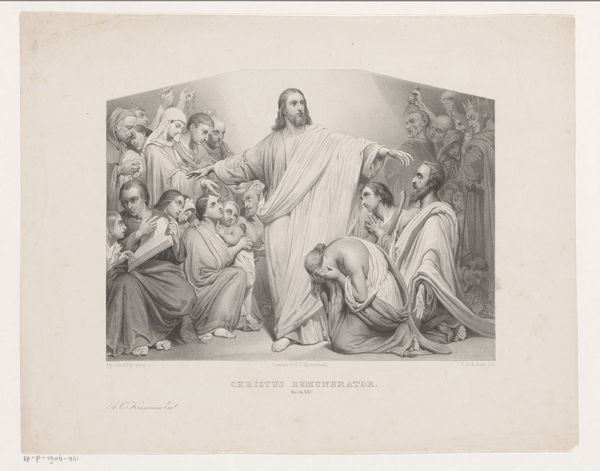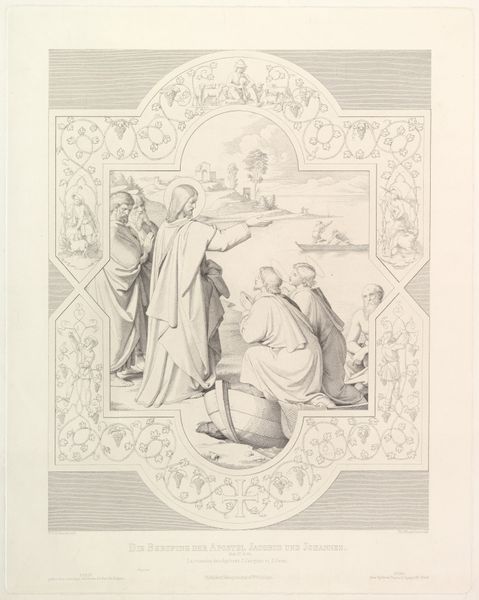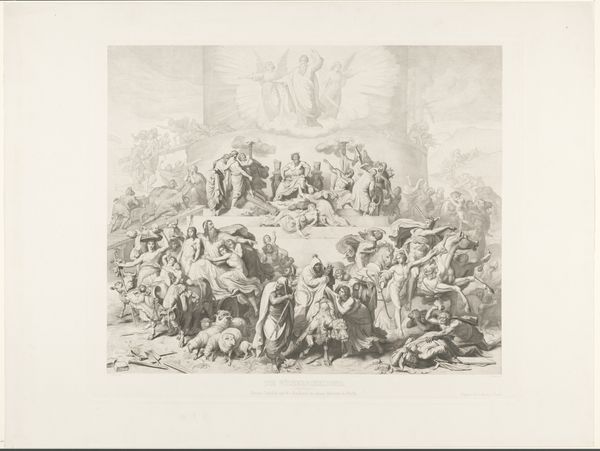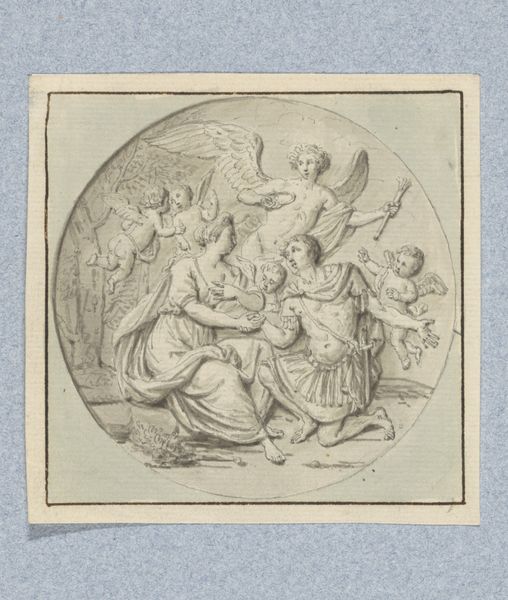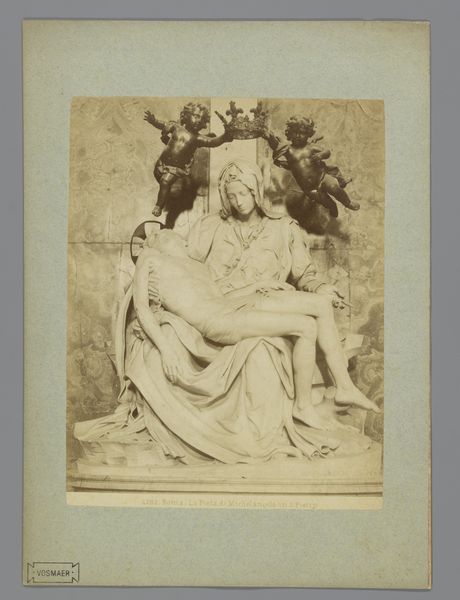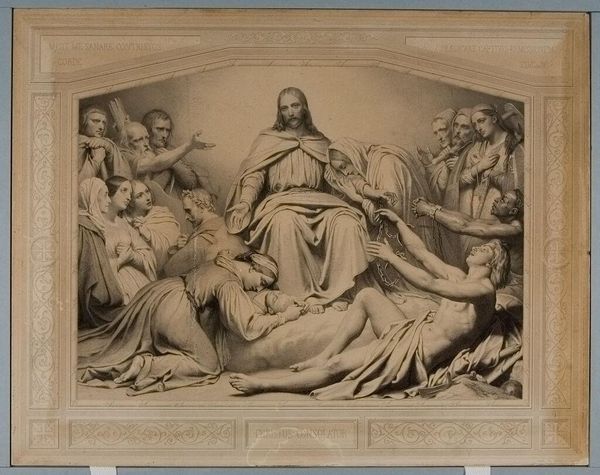
#
photo of handprinted image
#
toned paper
#
light pencil work
#
photo restoration
#
old engraving style
#
archive photography
#
historical photography
#
old-timey
#
pencil work
#
celebration photography
Dimensions: height 494 mm, width 574 mm
Copyright: Rijks Museum: Open Domain
Curator: Let's delve into "Christus Consolator," created around 1842 by Louis Pierre Henriquel-Dupont, presently residing at the Rijksmuseum. Editor: The composition strikes me immediately. There’s a muted grandeur. The artist used an old engraving style. Yet there’s something undeniably tender and heartrending about it. Curator: Indeed. Henriquel-Dupont's piece engages deeply with narratives of suffering and solace, prevalent during the 19th century, when social disparities and health crises were rampant. Look how the composition serves a specific message related to the role of religion. Editor: Absolutely, the iconography is rich. We have the figure of Christ centrally positioned, dispensing comfort and compassion to the ailing. This imagery resonates deeply with collective cultural memories of faith as refuge, a source of hope in desperate times. Curator: Beyond its face value, one can argue that this artwork operates within power dynamics of that time. Consider the racial implications – the subjects of consolation mostly seem white. It invites discourse on themes of privilege, access to divine grace, and whose suffering is acknowledged and legitimized. Editor: An intriguing perspective! However, the consistent depiction of Christ as a healer throughout different cultures—each shaping His appearance—suggests a fundamental yearning for divine intervention universally. Perhaps race is just one layer, influenced by existing artistic conventions? Curator: Precisely! And speaking of those conventions, Henriquel-Dupont's work isn't isolated. It directly engages with older traditions depicting Christ as healer and judge. Editor: To me, this piece reflects a deep-seated longing for an idealized protector, especially appealing amidst widespread societal unrest and fears during its creation. Curator: It's powerful how the symbols persist in carrying so much emotional significance even to this day. Thank you. Editor: My pleasure, unraveling the symbolic architecture always enhances my appreciation for the cultural narratives imbued within art.
Comments
No comments
Be the first to comment and join the conversation on the ultimate creative platform.
